Having spent a decade working in various veterinary environments, I can tell you that a common question among bird enthusiasts is, “Is a budgie a lovebird, and can they live together?”
Many even grapple with deciding between the two as their next feathery friend.
Join me as we unravel the intricate distinctions and resemblances between budgies and lovebirds, from their appearance, behavior, color to size.
No, a budgie is not a lovebird.
They’re distinct species – budgies originate from Australia, while lovebirds are African.
Choosing between the two depends on personal preference, both in terms of their physical attributes (appearance, color, size) and behavioral traits.
While they can cohabitate under careful supervision, compatibility varies greatly.
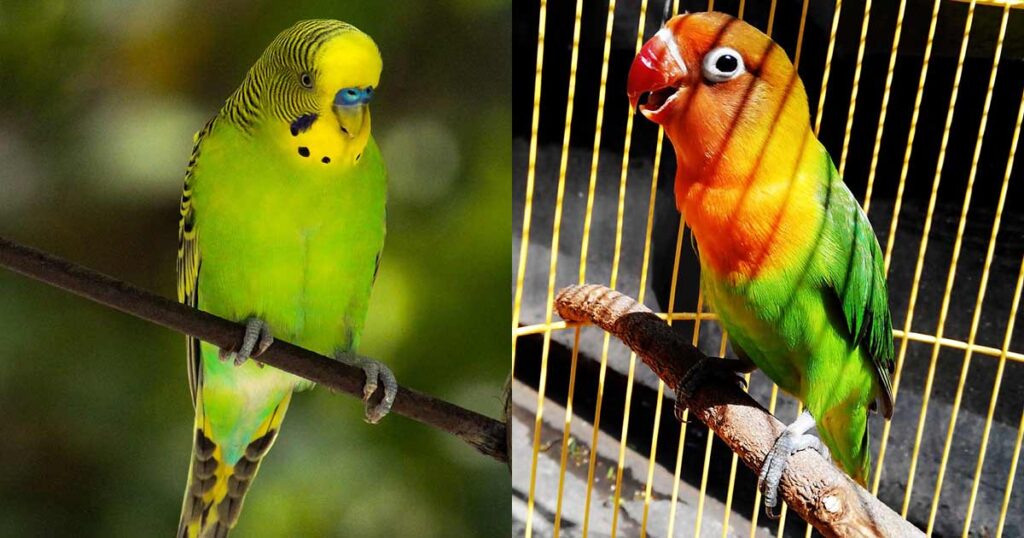
What Is A Budgie?
Let’s take a moment to introduce the first of our feathered friends – the budgie.
Scientifically known as Melopsittacus undulatus, the budgie, or budgerigar, is a small parrot species hailing from Australia.
They are colorful birds, with most possessing a bright green body, a yellow head, and black, scalloped markings on the nape, back, and wings.
Budgies are known for their lively, social nature and ability to mimic human speech.
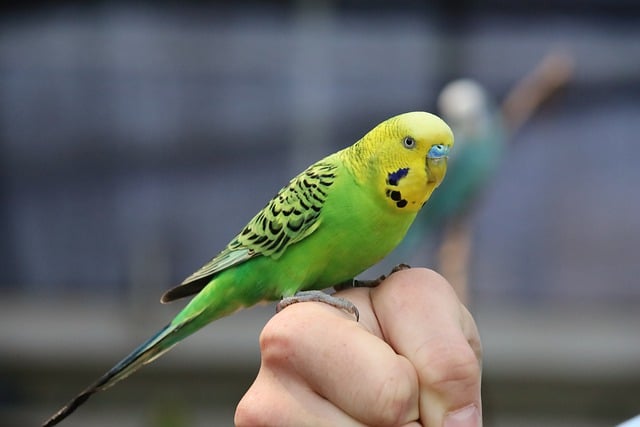
What Is A Lovebird?
Our next feathered friend on the agenda is the Lovebird.
Comprising nine different species, lovebirds belong to the genus Agapornis and are native to the African continent.
The most common variety in captivity is the Peach-faced Lovebird.
Lovebirds are renowned for their bright, multi-colored plumage and the affectionate bond they form with their mates, a trait that has lent them their romantic name.
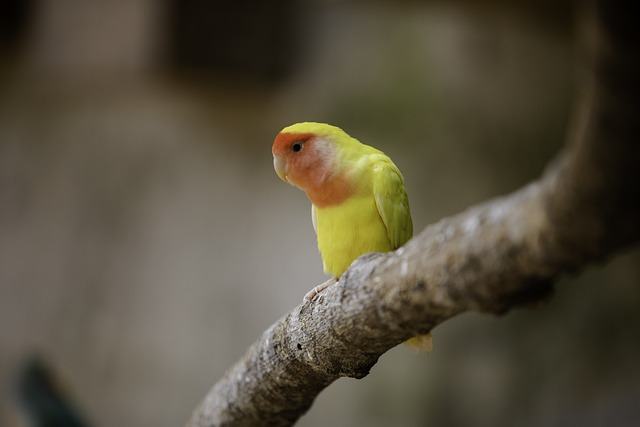
Common Misconceptions: Is A Budgie A Lovebird?
In the world of pet birds, a common misconception is that budgies and lovebirds are the same.
But, they are distinct species, each belonging to a different genus and native to different continents.
While their shared vivacious colors and social dispositions might cause confusion, understanding their individual characteristics and differences helps distinguish between the two.
Budgies Vs Lovebirds Comparison Table
I’ve created a chart so you can quickly look at the differences between a budgie and a lovebird.
You can see these features in more detail in the following sections of the content.
| Attribute | Budgie | Lovebird |
|---|---|---|
| Origin | Australia | Africa |
| Size | 5-6 inches (12.7-15.24 cm) | 6-7 inches (15.24-17.78 cm) |
| Color | Variety of colors, usually has a yellow head and green body with black scalloped markings | Various color combinations, depending on species |
| Lifespan | 5-10 years | 15-20 years |
| Health Conditions | Prone to tumors and psittacosis | Often suffers from vitamin A deficiency and psittacine beak and feather disease (PBFD) |
| Natural Diet | Primarily grass seeds | Seeds, berries, and other plant material |
| Diet In Captivity | Balanced diet of specialized bird pellets, fresh fruits, vegetables, and a limited amount of seeds | Same as Budgies |
| Noise Level | Lower | Higher |
| Intelligence | Excellent mimickers with a large vocabulary | Skilled problem-solvers, less proficient in mimicking |
| Aggression Levels | Lower, more friendly | Higher, can be territorial |
| Purchase Cost | Generally less expensive | More expensive |
| Maintenance Expenses | Lower due to smaller size and less demanding environmental needs | Higher due to larger size and more interactive environmental needs |
| Taxonomic Classification | Belongs to the Melopsittacus genus | Belongs to the Agapornis genus |
| Sexual Characteristics | Less apparent sexual dimorphism | More pronounced sexual dimorphism |
| Feather | Scalloped markings on back, wings, and nape | More uniform color pattern |
| Beak | Strong, curved beak | Stouter, more powerful beak |
| Head | Usually yellow with scalloped markings | Color varies depending on species |
| Tail | Long, slender with black and white markings | Shorter, square-ended |
| Interaction with Other Birds | Can cohabitate under careful supervision | Can show aggression towards other birds, cohabitation needs strict monitoring |
| Suitability for Beginners | More beginner-friendly due to their gentler nature and smaller size | Better for experienced bird owners due to their demanding nature and larger size |
| Speech Abilities | Excellent at mimicking human speech | Less proficient in mimicking, known for loud, shrill calls |
General Differences Between Budgies And Lovebirds
When comparing budgies and lovebirds, there are several general differences to consider.
Origin
Originating from different continents, budgies are native to Australia while lovebirds hail from Africa.
Lifespan
Generally, lovebirds have a longer lifespan, living up to 15-20 years, while budgies typically live between 5-10 years.
Taxonomic Classification
Budgies belong to the Melopsittacus genus, while lovebirds belong to the Agapornis genus.
They both belong to the Psittaculidae family.
Health Conditions
Each bird has unique health conditions.
For instance, budgies are prone to tumors and psittacosis, while lovebirds often suffer from vitamin A deficiency and psittacine beak and feather disease (PBFD).
Natural Diet
In the wild, budgies mainly feed on grass seeds while lovebirds’ diet consists of seeds, berries, and other plant material.
Diet In Captivity
In captivity, both birds thrive on a balanced diet of specialized bird pellets, fresh fruits, vegetables, and a limited amount of seeds.
Noise Levels
In terms of noise levels, lovebirds tend to be louder and more vocal than budgies.
Intelligence
Both birds exhibit high levels of intelligence but express it differently.
Budgies are known for their exceptional mimicking ability, while lovebirds are famous for their problem-solving skills.
Care Requirements
The care requirements for these birds involve providing adequate housing, regular grooming, maintaining a suitable temperature, and ensuring a balanced diet.
Housing And Environment
Housing for these birds should offer ample space for movement and play.
Lovebirds enjoy a larger, more interactive environment, while budgies are content in a less expansive setting.
Grooming
Both birds require regular grooming, including nail trimming and feather preening.
Regular baths help maintain feather health.
Temperature
Budgies and lovebirds thrive at room temperature, between 65 and 80 degrees Fahrenheit (18 and 27 degrees Celsius).
Rapid changes in temperature can be detrimental to their health.
Purchase Cost
In general, lovebirds tend to be more expensive to purchase than budgies.
Maintenance Expenses
Maintenance costs include food, toys, cage upkeep, and regular vet check-ups.
These expenses can be slightly higher for lovebirds due to their larger size and greater environmental needs.
Sexual Characteristics
Sexual dimorphism, where males and females display different physical traits, is more apparent in lovebirds than in budgies.
Physical Differences Between Budgies And Lovebirds
Size
Lovebirds are generally larger, measuring up to 6-7 inches long, while budgies are slightly smaller, reaching 5-6 inches in length.
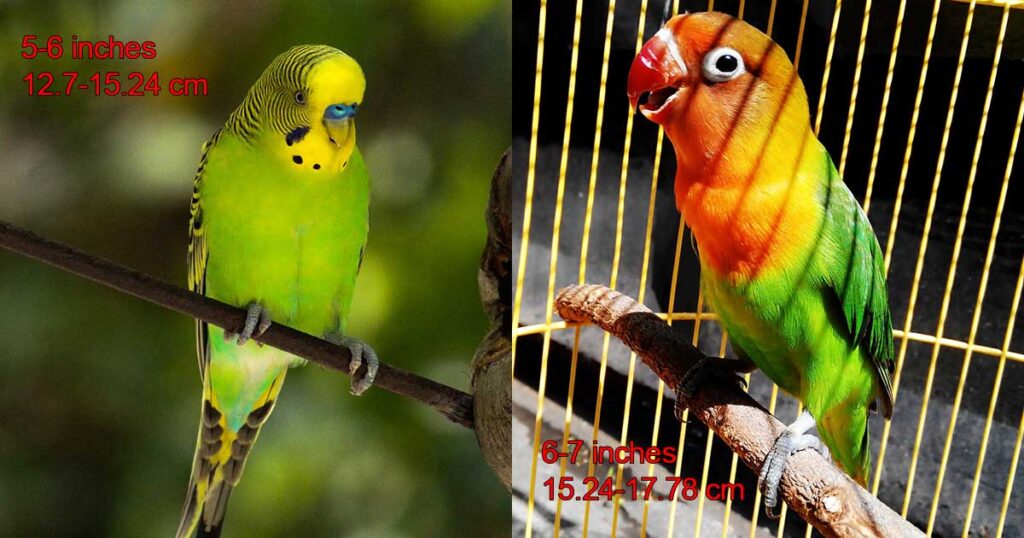
Feather
Budgies have scalloped markings on their back, wings, and nape, while lovebirds possess a more uniform color pattern across their body.
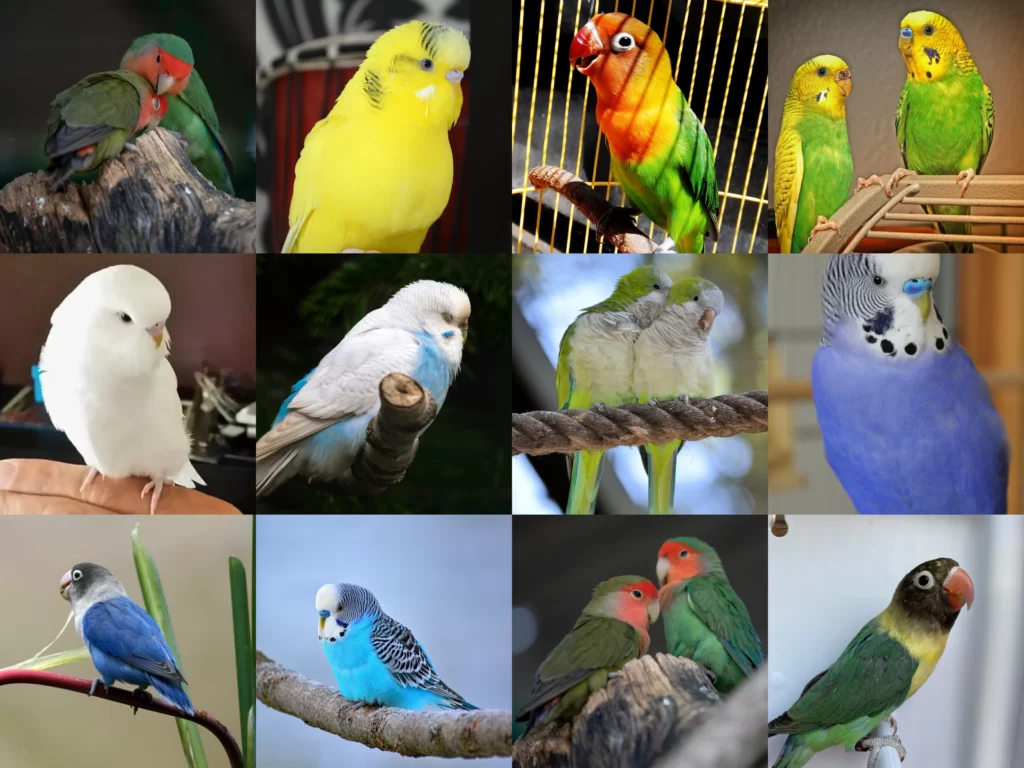
Beak
Both birds have strong, curved beaks.
However, the lovebird’s beak is noticeably stouter and more powerful.
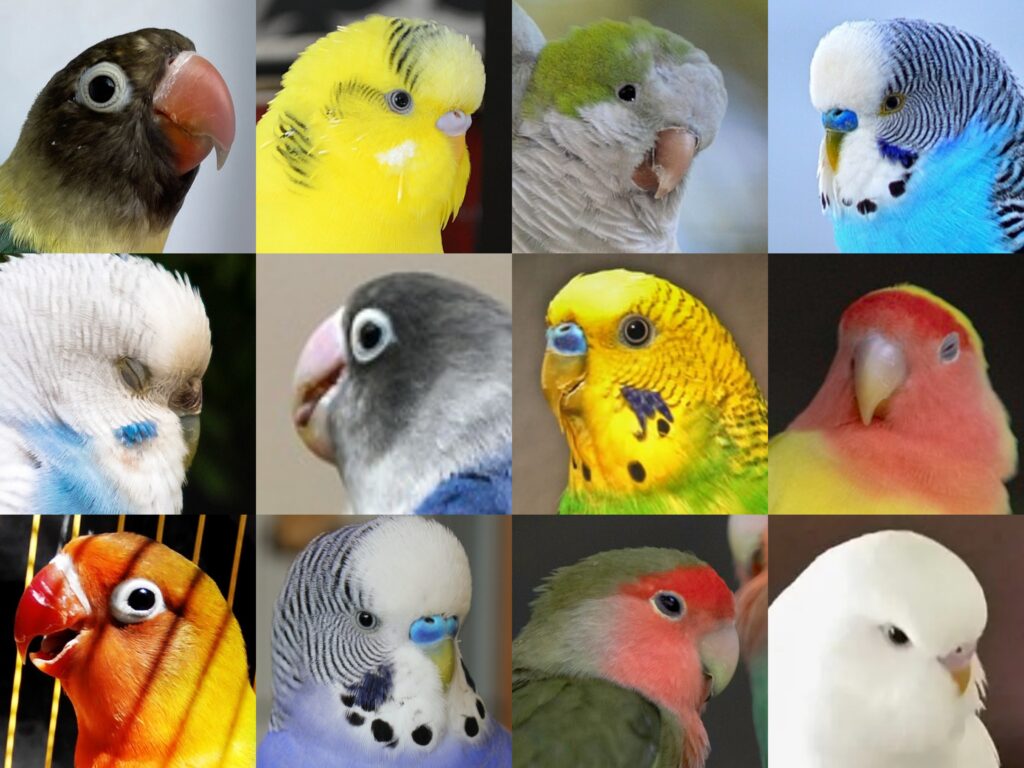
Color
Budgies and lovebirds come in a range of vibrant colors, but their patterns vary.

Head
Budgies typically have a yellow head with scalloped markings, while lovebirds can have a variety of head colors depending on the species.

Tail
Budgies have long, slender tails with black and white markings, whereas lovebirds have shorter, square-ended tails.
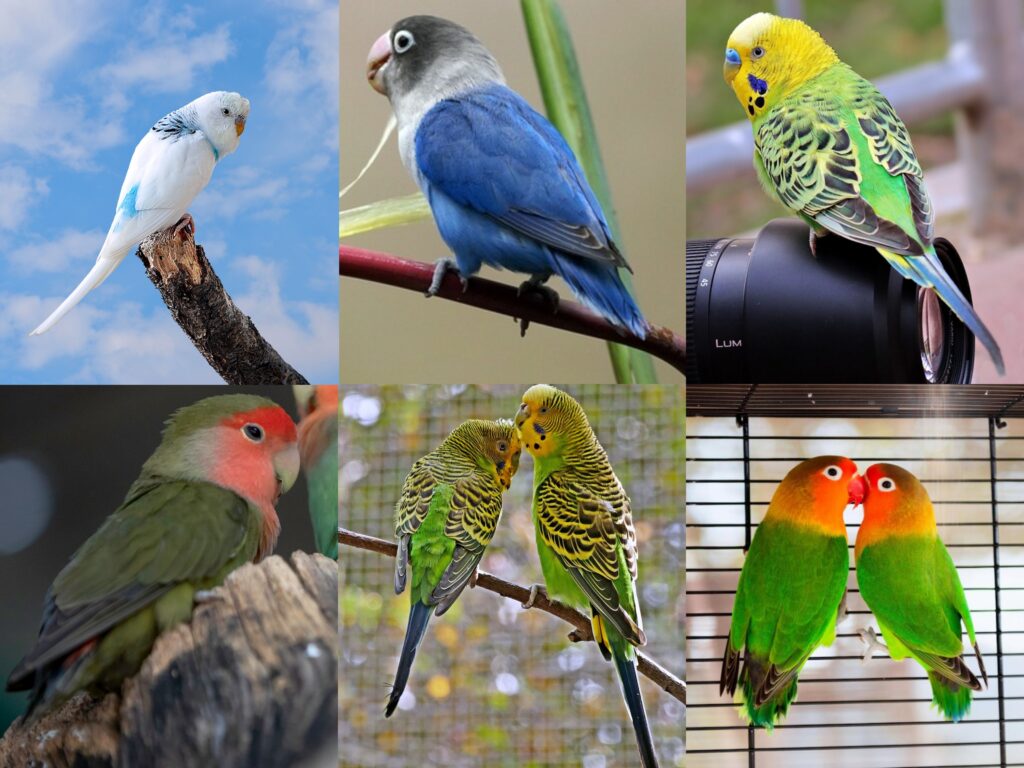
Behavior And Temperament Differences Between Budgies And Lovebirds
Intelligence And Learning Capabilities
Budgies have excellent mimicking abilities and can learn a large vocabulary of words and phrases.
Lovebirds, on the other hand, are skilled problem-solvers and can manipulate objects with their beaks and feet.
Aggression Levels
Aggression levels vary among individual birds but generally, lovebirds are more aggressive than budgies, especially during the breeding season.
Vocalization And Speech
While budgies can learn to mimic human speech effectively, lovebirds are not as proficient in this regard.
However, they are known for their loud, shrill calls.
Interaction Between Budgies And Lovebirds: Can Budgies And Lovebirds Live Together?
Common Issues And Precautions
Keeping budgies and lovebirds together can be challenging due to differences in their temperaments.
It is advisable to monitor their interactions closely and separate them if any signs of aggression are observed.
Aggression Problems
Lovebirds can be territorial and might show aggression towards budgies, especially during the breeding season.
How Long Can Budgies And Lovebirds Live?
Budgies can live up to 10 years, while lovebirds can live up to 15-20 years, depending on their diet, care, and overall health.
What Are The Similarities Between Budgies And Lovebirds?
Despite the many differences, budgies and lovebirds also share several similarities.
They are both intelligent, social creatures who form strong bonds with their human caretakers.
They both require a balanced diet, regular grooming, and mental stimulation.
For Whom Is The Budgie A Better Option?
If you’re new to bird ownership or looking for a quieter, less demanding pet, a budgie might be the better option for you.
They’re easier to care for, less noisy, and have a reputation for being friendly and gentle.
For Whom Is The Lovebird A Better Option?
Lovebirds are suitable for individuals who have experience with birds and can dedicate more time to their pet.
They are interactive, playful, and form strong bonds with their human counterparts.
FAQs About Budgies And Lovebirds
Which Bird Is More Beginner-friendly?
Budgies are generally considered more beginner-friendly due to their gentler nature and less demanding care requirements.
Do Budgies Or Lovebirds Speak Better?
Budgies are known for their ability to mimic human speech and can learn a large vocabulary of words and phrases.
Which Is Smarter Budgie Or Lovebird?
While both birds are intelligent, they express their smarts differently.
Budgies are remarkable mimics, and lovebirds are adept problem solvers.
So it depends on how one defines “smart.”
How Can I Tell The Difference Between A Budgie And A Lovebird By Their Appearance?
Budgies and lovebirds have distinct physical characteristics.
Budgies typically have a yellow head, bright green body, and black scalloped markings on their back, wings, and nape.
Lovebirds, on the other hand, are known for their multi-colored plumage and lack the scalloped markings of budgies.
What Are Some Unique Behaviors Of Budgies And Lovebirds?
Budgies and lovebirds exhibit different behaviors.
Budgies are sociable and known for their ability to mimic human speech.
Lovebirds, conversely, are known for their affectionate bonding with their mates, hence their name, and their ability to manipulate objects with their beaks and feet due to their high intelligence.
While it’s not impossible for budgies and lovebirds to share a cage, it’s generally not recommended.
This is because lovebirds can be territorial and may exhibit aggression, especially during the breeding season.
Therefore, if they are housed together, they should be closely monitored to prevent conflicts.
Is A Lovebird’s Lifespan Longer Than A Budgie’s?
Yes, generally, lovebirds have a longer lifespan compared to budgies.
Lovebirds can live up to 15-20 years, while budgies typically live between 5-10 years, given proper care and diet.
What Factors Should I Consider When Choosing Between A Budgie And A Lovebird As A Pet?
Choosing between a budgie and a lovebird as a pet depends on several factors, including your living situation, time commitment, noise tolerance, and experience with birds.
Budgies are often recommended for beginners due to their gentle nature and smaller size.
In contrast, lovebirds can be more demanding and are suitable for those with previous bird-owning experience.


![New Budgie’s First Days at Home & Behavior [What to Do?]](https://www.petiska.com/wp-content/uploads/2022/05/new-budgies-first-days-at-home-behavior-what-to-do-1653309166-400x300.jpg)